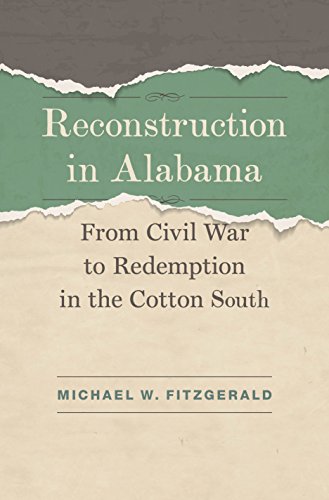

Most ebook files are in PDF format, so you can easily read them using various software such as Foxit Reader or directly on the Google Chrome browser.
Some ebook files are released by publishers in other formats such as .awz, .mobi, .epub, .fb2, etc. You may need to install specific software to read these formats on mobile/PC, such as Calibre.
Please read the tutorial at this link: https://ebookbell.com/faq
We offer FREE conversion to the popular formats you request; however, this may take some time. Therefore, right after payment, please email us, and we will try to provide the service as quickly as possible.
For some exceptional file formats or broken links (if any), please refrain from opening any disputes. Instead, email us first, and we will try to assist within a maximum of 6 hours.
EbookBell Team

4.3
28 reviewsThe civil rights revolutions of the 1950s and 1960s transformed the literature on Reconstruction in America by emphasizing the social history of emancipation and the hopefulness that reunification would bring equality. Much of this revisionist work served to counter and correct the racist and pro-Confederate accounts of Reconstruction written in the early twentieth century. While there have been modern scholarly revisions of individual states, most are decades old, and Michael W. Fitzgerald’s Reconstruction in Alabama is the first comprehensive reinterpretation of that state’s history in over a century.
Fitzgerald’s work not only revises the existing troubling histories of the era, it also offers a compelling and innovative new look at the process of rebuilding Alabama following the war. Attending to an array of issues largely ignored until now, Fitzgerald’s history begins by analyzing the differences over slavery, secession, and war that divided Alabama’s whites, mostly along the lines of region and class. He examines the economic and political implications of defeat, focusing particularly on how freed slaves and their former masters mediated the postwar landscape. For a time, he suggests, whites and freedpeople coexisted mostly peaceably in some parts of the state under the Reconstruction government, as a recovering cotton economy bathed the plantation belt in profit. Later, when charting the rise and fall of the Republican Party, Fitzgerald shows that Alabama's new Republican government implemented an ambitious program of railroad subsidy, characterized by substantial corruption that eventually bankrupted the state and helped end Republican rule. He shows, however, that the state’s freedpeople and their preferred leaders were not the major players in this arena: they had other issues that mattered to them far more, like public education, civil rights, voting rights, and resisting the Klan’s terrorist violence.
After Reconstruction ended, Fitzgerald suggests that white collective memory of the era fixated on black voting, big government, high taxes, and corruption, all of which buttressed the Jim Crow order in the state. This misguided understanding of the past encouraged Alabama's intransigence during the later civil rights era. Despite the power of faulty interpretations that united segregationists, Fitzgerald demonstrates that it was class and regional divisions over economic policy, as much as racial tension, that shaped the complex reality of Reconstruction in Alabama.